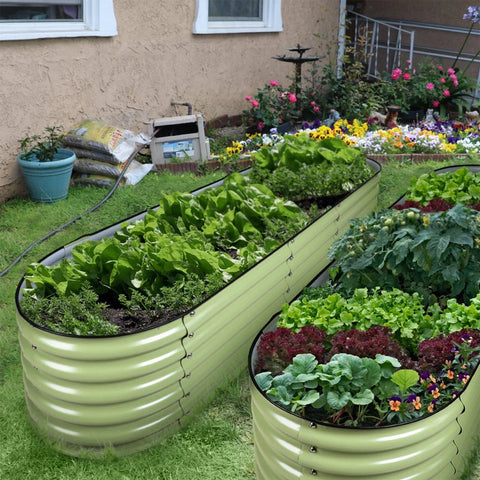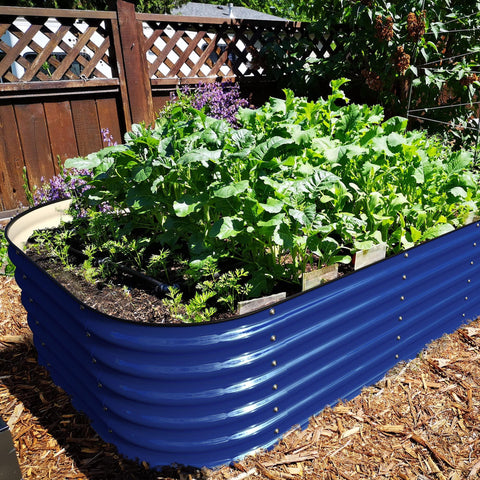Tips from Olle Garden How to Use Cloches and Critter Cages to Protect Young Plants
As a passionate gardener, there's nothing more rewarding than watching your tender young plants flourish and grow into beautiful additions to your garden bed. However, the journey from seed to maturity can be fraught with challenges, particularly when hungry herbivores and unpredictable weather threaten your precious seedlings. Luckily, the age-old techniques of using cloches and cages can come to your rescue, providing a simple yet effective solution to shield your young plants and ensure their successful growth.

How To Use Cloches and Cages
Acquiring and using pre-made cloches and critter cages is a straightforward process. The first step is to determine which items you wish to purchase.
If your goal is to safeguard small plants from occasional chilly weather and ward off tiny insect pests, a cloche would be the ideal choice.
On the other hand, if you are seeking protection against herbivores devouring your seedlings or aiming to prevent moths from laying eggs on your plants, cages would serve as the perfect solution.
In some instances, you might find that both cloches and cages have practical applications in your garden. Once you have identified your specific needs, selecting the most suitable product becomes an easy task.
Identifying Your Needs
Before delving into the world of cloches and cages, it's essential to identify your specific needs. Cloches are ideal for protecting small plants from occasional cooler weather and fending off small insect pests. They act as mini greenhouses, creating a warm and nurturing environment for delicate seedlings during the early growing season. On the other hand, if your garden is under siege from herbivores like rabbits or you're facing challenges with moths laying eggs on your plants, critter cages offer a sturdy fortress to keep these curious creatures at bay.
Selecting the Right Product
Once you've identified your requirements, it's time to choose the best product to address them. Whether it's cloches, critter cages, or a combination of both, each serves a specific purpose in safeguarding your garden bed. If you have a range of vulnerable plants, you might find that a mix of cloches and cages is the most effective strategy. Pre-made cloches and cages are readily available in garden supply stores, making it easy to select the right size and material for your plants.
Application Across Different Gardening Styles
Regardless of your gardening style, the use of plant protection systems can significantly benefit your garden bed. If your garden is fully fenced, taller enclosures can help keep out larger mammals like deer and raccoons. However, you may still encounter challenges with smaller animals like squirrels, rabbits, and birds. In such cases, cloches and cages are especially handy for individual young plants. For those using raised beds or container gardens, which may remain vulnerable to animal invasions, enclosing select plants with cloches or cages provides an effective defense.
Protecting Ornamentals
It's not just vegetables that require protection; many flowering plants are also at risk of being munched on by animals. Young ornamental plants, in particular, need special care and attention. For instance, rabbits have a penchant for colorful flowers, making critter cages a perfect solution to preserve the beauty of your blossoms. Additionally, strategically placing herbs like rosemary, lavender, and oregano in your garden can naturally deter herbivores due to their strongly scented leaves.
Graduating from Protection
As your young plants grow and flourish, they will eventually outgrow the confines of their cloches or cages. It's essential to monitor their growth closely and remove the protective coverings when the time is right. For cloches, a simple lift over the top of the plant will do the trick. However, when removing a cage, be cautious not to damage any leaves or stems entangled within the wires. Carefully guide any rogue stems back through the holes or trim them if necessary.
Understanding the Limitations
While cloches and critter cages offer remarkable benefits, it's essential to recognize their limitations. They may not be able to protect plants in every situation, particularly when dealing with larger animals or extreme weather conditions. Being aware of their capabilities will help you make informed decisions about when and where to use them most effectively.

In conclusion, the use of cloches and cages can significantly enhance your gardening experience and productivity. These simple yet powerful tools offer protection to young plants during their most vulnerable stages, ensuring they grow into robust and thriving additions to your garden bed. By understanding their uses and limitations and selecting the right product for your needs, you can cultivate a garden that flourishes with healthy and happy plants. So, whether it's sheltering your tender seedlings from unexpected cool weather or keeping pesky herbivores at bay, cloches and cages are the trusted allies that will help your garden thrive and flourish!
